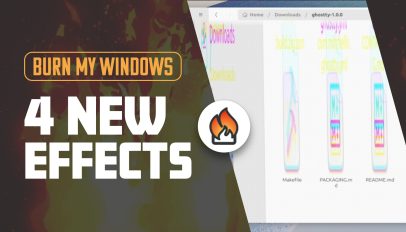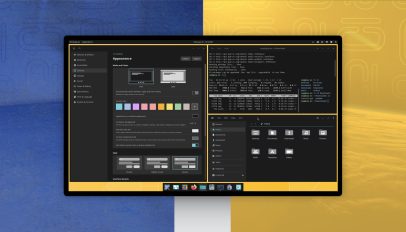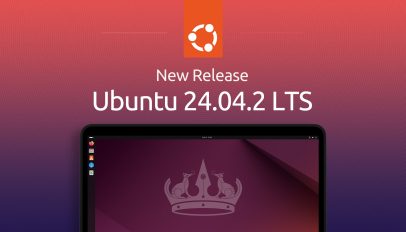Introduction
Memory management is a critical aspect of modern operating systems, ensuring efficient allocation and deallocation of system memory. Linux, as a robust and widely used operating system, employs sophisticated techniques for managing memory efficiently. Understanding key concepts such as page tables, swapping, and memory allocation is crucial for system administrators, developers, and anyone working with Linux at a low level.
This article provides a look into Linux memory management, exploring the intricacies of page tables, the role of swapping, and different memory allocation mechanisms. By the end, readers will gain a deep understanding of how Linux handles memory and how to optimize it for better performance.
Understanding Linux Page Tables
What is Virtual Memory?
Linux, like most modern operating systems, implements virtual memory to provide processes with an illusion of a vast contiguous memory space. Virtual memory enables efficient multitasking, isolation between processes, and access to more memory than is physically available. The core mechanism facilitating virtual memory is the page table, which maps virtual addresses to physical memory locations.
How Page Tables Work
A page table is a data structure used by the Linux kernel to translate virtual addresses into physical addresses. Since memory is managed in fixed-size blocks called pages (typically 4KB in size), each process maintains a page table that keeps track of which virtual pages correspond to which physical pages.
Multi-Level Page Tables
Due to large address spaces in modern computing (e.g., 64-bit architectures), a single-level page table would be inefficient and consume too much memory. Instead, Linux uses a hierarchical multi-level page table approach:
-
Single-Level Page Table (Used in older 32-bit systems with small memory)
-
Two-Level Page Table (Improves efficiency by breaking down page tables into smaller chunks)
-
Three-Level Page Table (Used in some architectures for better scalability)
-
Four-Level Page Table (Standard in modern 64-bit Linux systems, breaking addresses into even smaller sections)
Each level helps locate the next portion of the page table until the final entry, which contains the actual physical address.
Page Table Entries (PTEs) and Their Components
A Page Table Entry (PTE) contains essential information, such as:
 The KeepassXC snap package now “just works” with web browsers, with the latest update adding support for native messaging using secure desktop portals. KeePassXC is a cross-platform, open-source password manager billed as a ‘community-driven port of the Windows application ‘Keepass Password Safe'”. It supports Linux (including CLI), and a snap package has been available since 2017. But until now users who installed the snap to leverage the browser integration (be it auto-fill of usernames and passwords on websites they visit, or saving credentials for new accounts they create) have needed to use a workaround involving an external script. Aside from […]
The KeepassXC snap package now “just works” with web browsers, with the latest update adding support for native messaging using secure desktop portals. KeePassXC is a cross-platform, open-source password manager billed as a ‘community-driven port of the Windows application ‘Keepass Password Safe'”. It supports Linux (including CLI), and a snap package has been available since 2017. But until now users who installed the snap to leverage the browser integration (be it auto-fill of usernames and passwords on websites they visit, or saving credentials for new accounts they create) have needed to use a workaround involving an external script. Aside from […]
 A set of four cool new window opening and closing animations got added to gaudy GNOME Shell extension Burn My Windows this weekend. A veritable Linux eye-candy essential, Burn My Windows makes it easy to apply a variety of visual effects to Ubuntu when opening and/or closing app windows, dialogs, and modals. Its sole purpose is to make using Linux a bit more entertaining. Burn My Windows v45 is the latest update. It adds support for the upcoming GNOME 48 release (which will ship in Ubuntu 25.04 this April), fine-tunes effect filtering in Preferences, and improves its Incinerate effect with […]
A set of four cool new window opening and closing animations got added to gaudy GNOME Shell extension Burn My Windows this weekend. A veritable Linux eye-candy essential, Burn My Windows makes it easy to apply a variety of visual effects to Ubuntu when opening and/or closing app windows, dialogs, and modals. Its sole purpose is to make using Linux a bit more entertaining. Burn My Windows v45 is the latest update. It adds support for the upcoming GNOME 48 release (which will ship in Ubuntu 25.04 this April), fine-tunes effect filtering in Preferences, and improves its Incinerate effect with […] A new alpha release of System76’s emergent Rust-based COSMIC Desktop environment is out with a clutch of important improvements, bug fixes, and new features in tow. Although COSMIC is very much a work-in-progress (i.e., unfinished, feature incomplete, and lacking polish) some intrepid folks already use it as their daily driver —though most folks eager to sample it will get a better impression from the upcoming COSMIC beta. Still, these monthly(ish) alpha milestones provide a an easy way to peer through the portal to see how the COSMIC desktop UI, UX, and burgeoning app ecosystem is shaping up. Below, I recap […]
A new alpha release of System76’s emergent Rust-based COSMIC Desktop environment is out with a clutch of important improvements, bug fixes, and new features in tow. Although COSMIC is very much a work-in-progress (i.e., unfinished, feature incomplete, and lacking polish) some intrepid folks already use it as their daily driver —though most folks eager to sample it will get a better impression from the upcoming COSMIC beta. Still, these monthly(ish) alpha milestones provide a an easy way to peer through the portal to see how the COSMIC desktop UI, UX, and burgeoning app ecosystem is shaping up. Below, I recap […]
 The Ubuntu 24.04.2 LTS release is now available to download, albeit one week later than initially planned. Serving as the second point release in the current Ubuntu 24.04 LTS series, Ubuntu 24.04.2 compacts the slew of security, bug, and software updates pushed out to the Noble Numbat since the last point release ISO was spun in August 2024. Ubuntu 24.04.2 LTS also brings an updated hardware enablement stack (HWE). This is composed of a newer Linux kernel and updated graphics drivers—Linux 6.11 and Mesa 24.2.8 respectively—back-ported from Ubuntu 24.10. Why do point releases exist? Ubuntu LTS versions are supported for a […]
The Ubuntu 24.04.2 LTS release is now available to download, albeit one week later than initially planned. Serving as the second point release in the current Ubuntu 24.04 LTS series, Ubuntu 24.04.2 compacts the slew of security, bug, and software updates pushed out to the Noble Numbat since the last point release ISO was spun in August 2024. Ubuntu 24.04.2 LTS also brings an updated hardware enablement stack (HWE). This is composed of a newer Linux kernel and updated graphics drivers—Linux 6.11 and Mesa 24.2.8 respectively—back-ported from Ubuntu 24.10. Why do point releases exist? Ubuntu LTS versions are supported for a […]